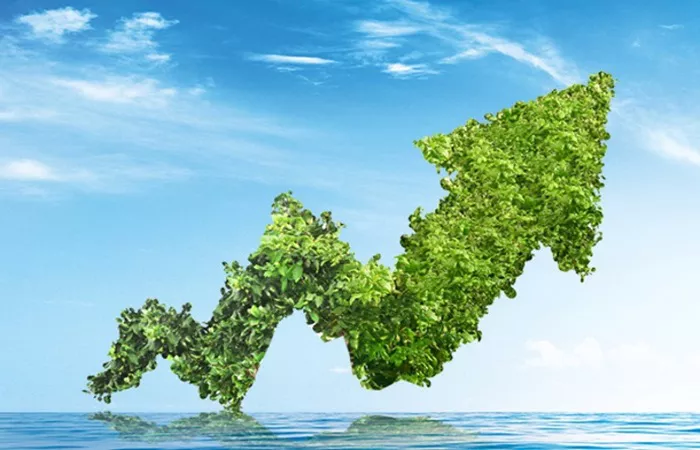Global Companies Demonstrate Carbon Neutral Solutions as China’s ETS Expands
The 2025 Shanghai International Carbon Neutrality Technology, Products and Achievements Expo (Carbon Expo) opened its doors on June 5 at the Shanghai New International Expo Center, marking the third edition of this increasingly influential industry gathering. Under the theme “The Path to Carbon Neutrality,” the three-day event attracted over 300 leading companies from 15 countries and regions, demonstrating the accelerating global momentum behind decarbonization efforts.
Industry Transformation Accelerates
This year’s event takes on particular significance following the expansion of China’s national carbon emissions trading system (ETS) to include steel and cement industries – a move that has made green transition strategies mandatory rather than optional for corporations. Shanghai Securities News reporters observed particularly strong participation from shipping, transportation, and chemical enterprises actively embracing this transformation.
Innovations Driving Industrial Decarbonization
Circular Economy Solutions
At the Dongfang International Group booth, visitors examined automotive interior components made from an unexpected source. “These high-performance green materials are produced using recycled mattresses and furniture as core raw materials, and have already seen widespread application in car interiors,” explained the exhibition manager.
The dark-colored interior panels, developed by Dongfang’s subsidiary Shenda Co., represent the company’s latest advancement in recycled materials. Shenda, specializing in automotive textile interiors, has also pioneered using fabric scraps processed into fibers that are then molded into automotive acoustic components – demonstrating how industrial waste streams can become valuable production inputs.
Shipping’s Green Fuel Revolution
Shenergy Group’s display featured an ambitious scale model of Shanghai’s 100,000-ton green methanol project, outlining its three-phase development plan. “Green methanol is emerging as one of the most promising alternative fuels for shipping over the next 10-20 years,” a Shenergy executive explained.
As home to the world’s busiest container port, Shanghai’s development of green methanol bunkering capabilities has become strategically crucial for maintaining its status as an international shipping hub while advancing China’s dual carbon goals. The project, initiated in September 2024 through collaboration between Shenergy, Shanghai Chengtou Group, Huayi Group, and Shanghai International Port Group, broke ground in January 2025 and is expected to commence operations by year-end – marking Shanghai’s first local green methanol production.
Logistics Electrification Advances
COSCO Shipping showcased its progress in logistics decarbonization, particularly through electrification solutions. Tianjin COSCO Shipping has been pioneering electric vessel applications for inland and coastal shipping while building out new energy vehicle and vessel supply chains. A recent milestone includes the “Midea Green Logistics Supply Chain” project launched in early May with COSCO Shipping Lines South China, which has already deployed its first batch of charging stations and electric heavy-duty trucks.
The custom-designed electric trucks, now operating on Midea Group logistics routes, demonstrate compelling environmental and economic benefits – reducing annual carbon emissions by approximately 300 tons per vehicle while cutting energy costs by about 70% compared to conventional diesel trucks.
Carbon Management Spawns New Industries
Digital Carbon Accounting Platforms
Beijing-based Yingtan Technology Development Co. represents a new breed of companies turning carbon management into a business opportunity. Originally established as an internal decarbonization unit for HBIS Group’s digital arm, the company began independent operations in 2023 and now provides AI-powered carbon accounting platforms to industrial clients.
“Since launching version 1.0 of our carbon neutrality digital platform in April 2022, we’ve continuously refined the system while serving over 200 industrial enterprises,” explained a company representative. “The inclusion of steel in China’s national ETS has created particularly strong demand this year.”
Bioplastics Commercialization
Anhui BBCA Biochemical Technology Co., a leader in polylactic acid (PLA) production, demonstrated how bio-based materials are gaining commercial traction. PLA – produced from corn, potatoes, or cellulose through bacterial fermentation – offers a biodegradable, non-toxic alternative to petroleum-based plastics and fibers.
“While PLA carries a price premium, its environmental advantages are driving adoption across automotive interiors, 3D printing materials, and consumer goods like cup lids and straws,” explained a BBCA representative. The company has even established a fashion subsidiary, Shanghai Lemon Tree Apparel, to explore PLA applications in textiles, with T-shirts made from the innovative material prominently displayed at their booth.
Market and Policy Context
Carbon Pricing Expansion
The exhibition occurs as China’s carbon market undergoes significant expansion, with analysts predicting the inclusion of additional high-emission sectors in coming years. Current carbon prices hovering around 80 yuan/ton are expected to rise progressively, increasing the economic imperative for emission reduction investments.
Technological Leapfrogging
Several trends emerged from the exhibition floor:
- Cross-sector pollination: Technologies developed for one industry being adapted for others
- Circular integration: Waste streams from one process becoming inputs for another
- Digital-physical fusion: AI and IoT enabling smarter carbon management
- Scaling challenges: Many solutions still requiring commercialization at industrial scale
International Collaboration
With participants from 15 countries, the event served as a networking hub for global decarbonization efforts. European companies particularly showcased hydrogen technologies, while Japanese firms highlighted energy efficiency innovations – suggesting potential areas for international technology transfer and joint ventures.
Future Outlook
Industry experts identified several key developments to watch:
- Green methanol standardization: Establishing bunkering protocols and quality standards
- Bioplastics cost curves: Achieving price parity with conventional plastics
- Circular economy regulations: Policy frameworks to incentivize industrial symbiosis
- Carbon accounting harmonization: Developing consistent measurement methodologies
As the Carbon Expo concludes, participants return with both inspiration and urgent questions about how to accelerate their decarbonization roadmaps. With China’s carbon market continuing to mature and global climate pressures intensifying, the technologies showcased in Shanghai this week may soon transition from exhibition novelties to industrial necessities.
Related topics:

